Second world war survivors from across Europe share their stories
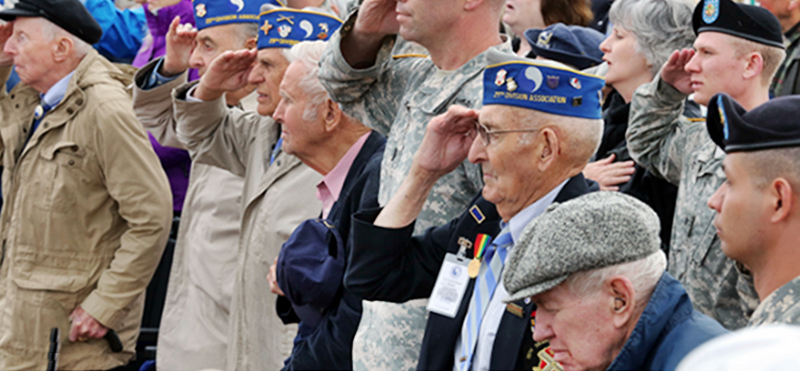
By Guardian-Kate Connolly/Caroline Davies/Maris Hellrand 8 May 2025
Eighty years ago today, on 8 May 1945, the second world war in Europe came to an end with the unconditional surrender of Germany’s armed forces. On the 80th anniversary of the end of the second world war in Europe, survivors, including veterans from both sides, remember what happened
The number of people who remember the war – and how it finished – decreases every year, even as European security feels ever more precarious. Here, seven people, aged between 85 and 100, from Estonia, Poland, Britain and Romania, talk to the Guardian about their memories.
While the vast majority of World War II veterans have passed away, some survivors remain, primarily those who were young during the war and now in their 90s or 100s. Estimates for the number of WWII veterans alive today range from 300,000 to 500,000. The number is difficult to pinpoint as countries don't always maintain up-to-date records, and veterans pass away regularly. Here's a more detailed look at some of the survivors:
- WWII Military Veterans:According to the US Department of Veterans Affairs, 66,143 of the 16.4 million Americans who served in WWII were alive as of 2024. The youngest veterans who entered the military at age 18 in 1945 are now 96 years old.
- Holocaust Survivors:At the start of WWII, approximately 9.5 million Jews lived in European countries under Nazi control or those that would be invaded. Nearly 6 million were murdered, leaving around 3.5 million survivors. As of 2024, about 245,000 Holocaust survivors were still alive, according to Wikipedia.
- Other Survivors:This includes individuals from other groups persecuted during the war, such as Roma and Sinti, Poles, Soviet prisoners of war, and political prisoners, according to the United States Holocaust Memorial Museum.
- Examples of Notable Survivors:Bud Anderson, who was a pilot during WWII, lived to be 102. Bud Reynolds, who was part of the US merchant marine during the war, was recognized as the oldest living merchant marine and participated in the 80th anniversary of D-Day in Normandy. Elie Wiesel, a well-known Auschwitz survivor, shared his experiences in a book and became a prominent figure in the fight against intolerance, according to AB Poland Travel.
Holocaust survivors - WikipediaNumbers of survivors. At the start of World War II in September 1939, about nine and a half million Jews lived in the European countries.
’At last you could turn a light on and not have to pull the curtains’
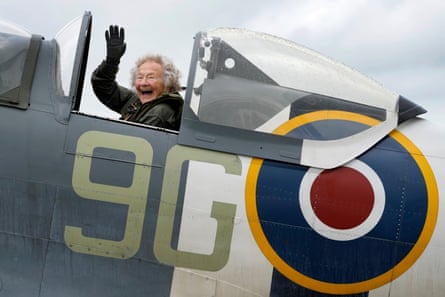
Dorothea Barron, 100, joined the Women’s Royal Naval Service (WRNS) aged 18 in 1943. The retired art teacher, a great-grandmother, still teaches yoga and lives in Hertfordshire in the UK.
“I grew up in Hampton right on the Thames. And, of course, the Thames was like a beacon day and night. You can’t disguise the glint of moonlight or any light on water. So we were being bombed.
“At night, we’d all pile down into the shelter which we had helped to dig out in our garden, and then cover over with corrugated iron. The earth you had dug out you piled on top to disguise it so it didn’t glint in the moonlight.
“I joined the WRNS when I was 18. I was a visual signaller, which meant that I had to go out in all weathers to signal to ships coming into harbour. They also flew flags at the mast to say ‘we need water’ or ‘we have a casualty on board’ – things like that.
“We also took part in training the boat crews who took the troops off the big liners and transported them to the waters off Normandy for the D-day landings.
“When Germany surrendered, I was based in the Isle of Wight. There was just sheer delight. We all went completely mad. We were broadcasting over loud hailers to all the ships. We were talking to each other in morse code and semaphore.
“I was in a signal tower somewhere. Out on the streets there was cheering and singing and dancing and everything. The ships dressed in celebration. It was wonderful. It was such a relief. Relief that we’d got rid of nazism.
“I don’t think [people] can conceive at all about the relief. At last you could turn a light on and not have to pull the curtains. Yes, the freedom, the idea of freedom again.
“But there was also the remembrances, the friends who you’d lost, kids you’d grown up with who had been shot down, out of the sky or on the land.
“Nobody wins a war. Nobody. Everybody loses. And as soon as people begin to realise this, perhaps women’s common sense will prevail. The women have to pick up the pieces after a war, have to reconstruct families and homes.”
- Dorothea is a passionate supporter of the Taxi Charity for Military Veterans and recently launched its Our Heroes Fund, to raise money for future trips for veterans to the continent and across the UK.
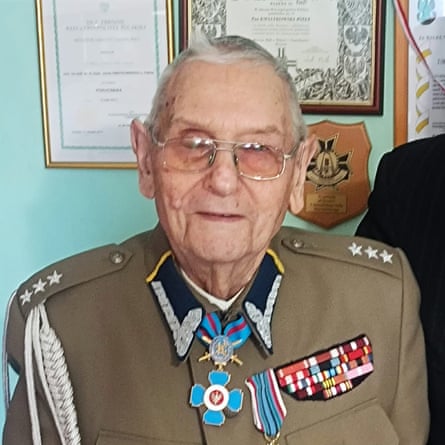
2Lt Józef Kwiatkowski, 98, born in Łuck in Volhynia, then part of Poland, now in Ukraine, was part of the First Polish Army, 180,000 of whose members, many former underground fighters, fought alongside the Red Army and allied forces in April and May 1945 to liberate Poland from fascism.
“I remember the stench of death, the destruction, the dirt, the lice, the ulcers, the hate and the mistrust of those days. War is a terrible thing.
“On 3 March 1945, I was walking with my comrade Tadeusz ‘Tadek’ Sokół and we were tasked with fixing telephone cables. When we reached the spot where a cable had been damaged, a German soldier pounced out. Another was hiding behind a tree, but I couldn’t shoot at him because he was behind Tadek. Then, the first German more or less cut Tadek in half with the burst of fire from his rifle, whereupon I killed him, and took the other prisoner.
“For decades, I’d wanted to find Tadek’s grave, but was never able to locate it. I had never forgotten this jolly chap from Lvov [now Lviv in Ukraine], who had made us laugh with his Yiddish songs and hadn’t had the chance to live a full life like I have. I named my own son after him.
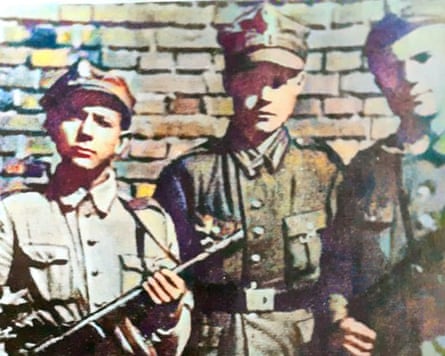
“Then, just before the pandemic, all the Polish war graves information was digitalised. My carer, Łukasz, found in eight minutes what I’d spent 80 years searching for. We went to visit his grave on the 80th anniversary in Drawsko, north-western Poland. I lit a candle and cried like a river. I wouldn’t say I quite feel closure though. I still ask myself: might I have managed to save him?
“When the war ended, I was in the town of Sandau on the River Elbe, where we met American forces and celebrated together. I remember the shock of the profound silence – no explosions, no whistling bullets, no noise, just quiet.
“The current war in Ukraine fills me with anxiety. It’s a failure of humanity that we have not managed to stop the Russian aggressor and says to me that we learned few lessons from the second world war.”
‘Shrapnel from the grenades was flying over our hedge’

Aasa Sarnik, 85, from the Estonian village of Pihlaspea, was five in 1945. Soviet troops had invaded the Baltic countries – Estonia, Latvia and Lithuania – in 1940, but were pushed out by the Nazis a year later. The Red Army retook the countries in 1944 and occupied them until the collapse of the Soviet Union in the early 1990s.
“In September 1944, we had packed all our things, ready to flee to Sweden [as the Soviet army was coming]. But at the last moment, my parents decided that we would stay.
“I remember the big battles that took place here on the sea. There were German ships everywhere and the Russian aeroplanes flew over our house and started shooting at them. My father called me to come out and see how a Russian aeroplane, which had been hit by ammunition from a ship, was falling into the sea. Shrapnel from the grenades was flying over our hedge. When the next plane started its descent, we all ran into the cellar.
“While others in Europe might have been celebrating, May 1945 here was a time of fear, which I remember well. No one was cheering. We were just scared.
“Soon after their arrival, the Russian army started to control the seashore near our house – the sand on the beach was flattened every night so that they could detect any footprints. Sometimes they would even come to the houses at night to check and measure our footprints.
“All the boats were confiscated and access to the sea was barred. Even children’s rubber dinghies were forbidden.
“I remember how in 1945 German PoWs were held captive by the Red Army in our village, behind a thick barbed wire fence. My mum sewed me an apron and baked some bread. I went to bring some bread to them, even though I was quite scared, but I made it back safely.
“I’m afraid, of course, nowadays, especially because I’m constantly following these world events. The sense of foreboding similar to what we felt back then is here again.
“Of course, the big plus nowadays … is that we’re a part of Nato together with Finland and Sweden. But I tell you I simply don’t want to experience another war. One is enough, thank you very much.”
‘There were no celebrations on the streets of Bucharest’
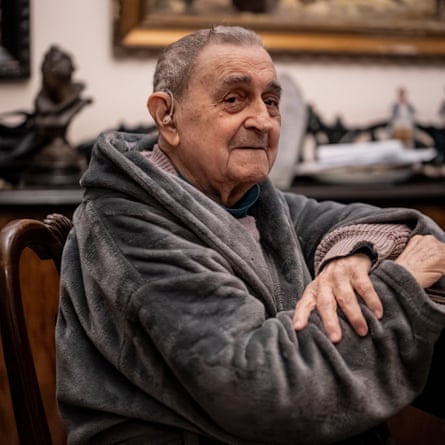
Victor Pitigoi was 18 and studying to be a mechanical engineer in Bucharest when the second world war ended. His family had been forced to leave their home in Chișinău, Moldova, when war broke out. Aged 98, he still works as a journalist, filing regular columns on Romanian politics.
“The war didn’t affect us much until 1944, when Anglo-US bombers started attacking Romania. We evacuated Bucharest on 4 April 1944, ahead of a huge bombing raid the following day.
“My family took refuge in the mountain valley resort of Vălenii de Munte in southern Romania. School was stopped but life was OK, as we had access to a big orchard and the people who had taken us in were kind.
“The Soviet Union took over Romania in August ’44 … I have never been so miserable as I was during this period between 1944 and 1948, 1946 being the most sinister time of all due to famine. They behaved savagely, firstly taking our food, and helped by Romanian communists who wanted to be in the first row when the time came.
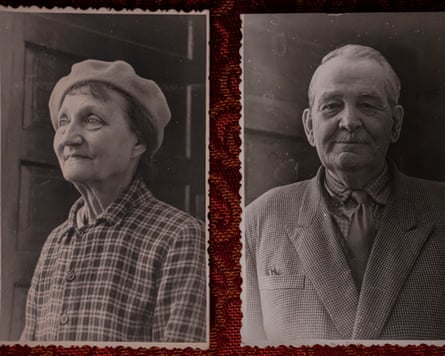
“Refugees who were starving arrived in the capital in droves, and I remember on my way to school crossing the marketplace at Gara de Nord railway station and seeing the bodies. Every morning people from the morgue would send vans and kick the bodies. If they moved they were alive, if not they were carted away.
“People were sick of the war, revolted, angry because of the agreement Stalin made with Churchill, which gave the Soviet Union huge influence in Romania and paved the way for decades of dictatorship, of homegrown Romanian communism under Ceaușescu, when we lived in a constant state of fear.
“There were no celebrations on the streets of Bucharest when the war was over. There was nothing really to celebrate. The fact that Hitler had killed himself was a sidebar. We had to deal with the presence of the Soviets. I took comfort, and still do, in the fact that our 23-year-old king, Michael, had stood up to the Germans and led an insurrection against them, while all the other leaders ran away. He was someone we could be proud of. We hoped he’d do the same to the Russians, but it didn’t happen.”
Notable survivors from WWII
1] Lyle Bouck (1923-2016)
At twenty years-old, Lt. Lyle Bouck commanded what would become WWII’s most decorated US platoon – an Intelligence and Reconnaissance unit from the 99th Division. He was the main source for my book, The Longest Winter - the very definition of an officer and gentleman. He made me vow to tell the story of every member of his 18-man platoon when I was researching my book.

He endured many hours of questioning in his condo in Florida and his home in St. Louis. Every 17 December for years I would contact him – that was the day in December 1944 when he marked his 21st birthday as a POW having carried out orders to hold at all costs. He did just that and in doing so stalled a critical SS spearhead, altering the course of the Battle of the Bulge. Courage counts. He had it in spades. Friends’ “Last Battles Tour” this fall includes a stop at Lanzerath, Belgium, where Bouck and his platoon held their positions in one of the great last stands of WWII.
This 16 December, raise a glass to Bouck and his men on the 80th anniversary of the deadliest battle for the US of WW2.
2] Felix Sparks (1917-2007)
In over five hundred days of war, Texas-born Felix Sparks rose from a tough young captain of E Company, 157th Infantry Regiment to Lt. Colonel, in charge of a task force that was to hunt down Adolf Hitler but instead liberated Dachau concentration camp on 29 April 1945. I interviewed him on his death-bed in Denver, my tape recorder on the pillow beside his head. The most formidable warrior/leader I have ever met - gruff, outspoken, big-hearted, brittle, a truly amazing human being, the subject of my book, The Liberator.

Think of Sparks and so many other liberators this 29 April on the anniversary of the liberation of Dachau.
3] Bob Sales (1925-2015)
The funniest WW2 veteran I ever got to know, one of many who made me laugh hard and long. Bob was the most important eyewitness for my book, The Bedford Boys. He landed, aged just 18, in the second wave on the deadliest section of Omaha Beach on D Day, rolling dead bodies in front of him to stay alive. He fought on with B Company, 116th Inf. Regiment until wounded near Aachen. I’ll always remember his hilarious stories about having fun in England before D Day, and the giant flag-pole he had in his yard in Lynchburg, Virginia.

This 6 June, think of Sales taking shelter behind the corpses of his fellow Virginians and then breaking out from the stretch of hell depicted in Saving Private Ryan.
4] Bill Leibold (1923-2022)

Bill Leibold was the last living survivor from the USS Tang. He was as humble and dedicated as they come, devoting his life to the US Navy. I’ll never forget sitting with him as he described looking through binoculars in October 1944 and seeing a torpedo broach the surface, leaving behind a phosphorescent wake. It was the last of 18 torpedoes fired on the fifth patrol of the legendary USS Tang, arguably WWII’s most lethal US submarine. Leibold watched as the torpedo boomeranged and then sank the USS Tang. He was one of just nine survivors (from 87 men) who were fished from the ocean by vengeful Japanese and who somehow survived POW camps.
Think this Memorial Day of all the submariners, those of the Silent Service, who remain on eternal patrol. These men paid a very high price but arguably had the greatest impact, per capita, of any branch of the US military.
5] Abraham Baum (1921-2013)
I remember a beautiful day in San Diego and Baum, born in the Bronx, telling me the unlikely story of how he went from making patterns for women’s dresses to leading one of the most controversial “suicide missions” of WWII – the notorious Hammelburg Raid of March 1945, a disastrous attempt, ordered by General Patton, to free American POWs, namely Patton’s son-in-law. Baum was gracious, larger than life, a proud tanker and superb story-teller who didn’t hesitate to tell the likes of Patton, if need be, the raw truth.

This summer, think of the glorious 4th Armored, Baum’s unit, barreling across France, setting so many free.
6] Bob Slaughter (1925-2012)

Bob was a towering figure, six foot six inches on D Day, landing with D Company of the 116th Infantry Regiment on Omaha Beach. Some of his buddies from Roanoke, Virginia, died that 6 June and in subsequent weeks as Bob fought through the hedgerows toward St. Lo. He did more than any D Day veteran I’ve met to preserve the stories of those he fought with and to commemorate the loss. In 1994, on the 50th anniversary of D Day, he stood on that deadly beach with President Clinton. He was still a towering presence.
This April, imagine the “boys” like Bob Slaughter making their final preparations for D Day, writing their last letters home.
7] Bill Edwards (1918-2009)
Bill was in his late Eighties when he took me for a quick flight above Colorado Springs in a Cessna. I took the controls for a few seconds and imagined Bill at his prime, as an Eagle pilot, flying Spitfires and Hurricanes in the RAF’s 133 Squadron, before Pearl Harbor, risking his life as a Yank for my homeland before the US had even gotten into the war. He landed the Cessna perfectly. I did not even feel a jolt.

Bill flew 27 combat missions as an Eagle pilot, became a POW and served his country for decades more. He loved England and the US with all his heart. I’ll never forget the Eagle Squadrons' reunion he invited me to - getting to say thank you to him and his fellow fighter pilot veterans who had once worn the dark blue of the Royal Air Force. Top guns? You better believe it!
Imagine taking to the air in the spring in 1944 having already fought since 1940 or 1941, as an American, in the deadly skies to defeat Nazism.
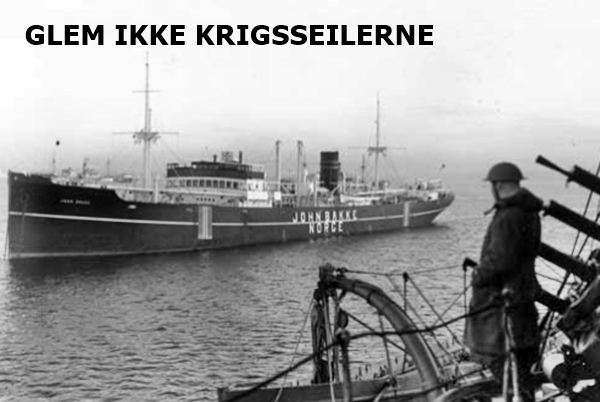
Happy May 8th!
Let us not forget that, in the lead-up to World War II, there was widespread disrespect toward the United States in Europe—just as we see today. A sense of inferiority toward American freedoms was then, as now, a recurring theme across Europe. This gave Hitler a strong tailwind in his rise to power, leading to five years of global war.
It was the United States that had to step in to restore peace and establish the Nuremberg War Tribunal to prosecute and sentence perpetrators of crimes against humanity—including the death penalty for genocide.
We must celebrate our freedom, but never forget the dark curtain that once fell over Europe. Ideologies like Nazism and Communism can push ordinary people to kill one another.
May it never happen again—that ignorance and incompetence triumph over intellect and human dignity.
